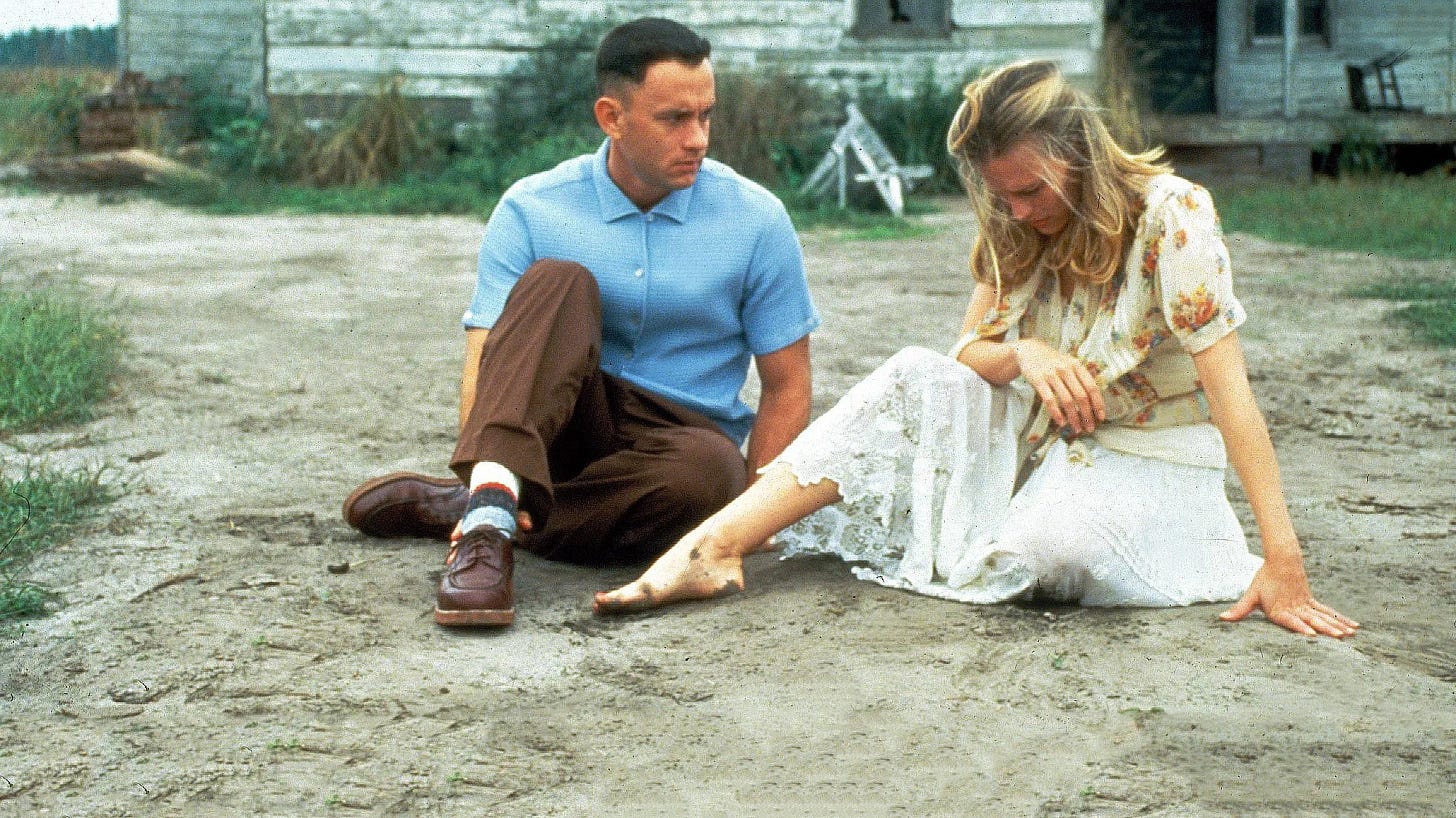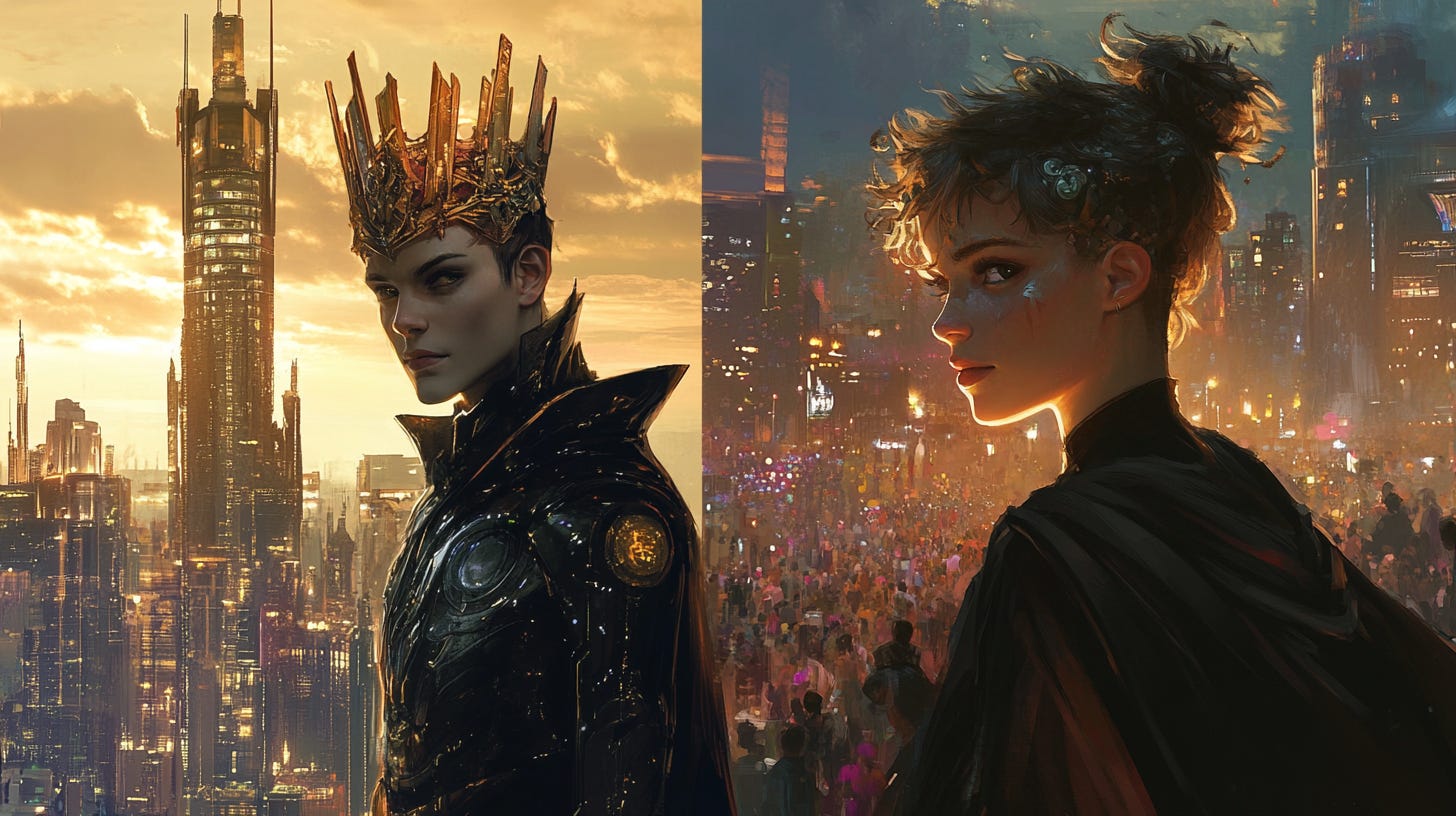The greatest stories often have characters that feel so real, you almost believe they exist. But, of course, they don't. And if you come into the character development process trying to mimic real people down to the T, you'll likely struggle to build believable characters.
Why? Real people are crazy complicated. We’re full of paradoxes, and our choices often seem random or inconsistent. We’re not as simple as story characters. Good writers, of course, draw inspiration from real people and, at times, even create characters based on people who are alive or were. But even if the characters are based on actual people, writers still simplify them to fit the story, just as they do with all their characters.
But this post isn’t about creating good characters. That was covered in my previous article about Character Engines, which I recommend checking out before reading this. No, this post is about what to do after you develop your characters.
Specifically, I want to go over how to build dynamic character relationships. Let's assume you've built all of them, main and supporting. How do you get your ensemble to engage one another so they drive conflict, meaning, and the possibility for character growth? And how do you do all of this in a way that indirectly expresses the story's theme?
And here you thought that all you had to do was create your characters. No, no, no, my friend. That's step one. Now, make them interact in ways that move the story. Let me show you how to do that.
Conflict Versus Opportunity
Sometimes, we tell stories focused on a single character, but more often, we write about groups of characters whose interactions develop the story and shape the plot. As writers, we want these interactions to advance the narrative meaningfully. But any kind of interaction, even a logical one, isn’t sufficient to make your story move. While there are infinite ways to build these interactions, most choices you make should ideally be things that drive conflict or character development.
Let’s take the movie Forrest Gump as an example. The opportunity between Jenny and Forrest is their love for one another. Jenny is a broken woman who needs a person in her life to love her unconditionally. Forrest is someone who often gets rejected by society due to his intellectual disability and longs for a deep emotional connection. So what they need and the opportunity they can provide for one another is a loving relationship.
But what makes this movie remarkable is the conflict within their relationship, which lasts their entire lives. Jenny struggles with addiction and often makes self-destructive choices, while Forrest, despite his limitations, consistently approaches life with kindness and integrity. Their contrasting lifestyles and stark differences in mental capabilities are what create conflict in their relationship.
It’s this interwoven blend of tension and potential for growth that makes them so compelling to watch. And if you notice, every single interaction they have conveys this in some way. Take, for instance, Forrest's first meeting with Jenny on the bus. She offers him a seat when no other kid wants to sit next to him. We see an introduction to that opportunity as Jenny is already a broken girl living with an abusive father, and Forrest is being rejected by his peers. So Jenny needs someone to love her, and Forrest yearns for belonging and emotional intimacy.
However, years later, when he meets Jenny at her dorm, the conflict is shown in the form of Forrest ruining her date because he thought this guy was attacking her in his car when he was actually making out with her. This highlights the gap in their mental capacities and the contrasting ways they approach the world. But then the opportunity is shown to us once again when they go back to her room and share a sexual moment. She was on a date with a guy who just wanted her body instead of being with Forrest, who loved her unconditionally, no matter how ugly her life was.
So you see, when it comes to character interactions, it’s a dynamic interplay between conflict and opportunities for growth. And when characters engage with each other, almost everything from action to dialogue expresses one or the other or both in some way. Now, with that out of the way, let me show you how to create meaningful opportunities and conflicts between your characters.
The Character Web
Meet the Character Web. This is what I use for character relationship mapping. I don’t use this template if my story has a few characters with clear conflicts and opportunities. But when dealing with a more complicated, dynamic ensemble, this tool becomes really useful as it helps me focus on the most important underlying elements of my relationships. So how does this work? It’s super simple, even though it looks a little complicated.
First, let's examine what’s inside the circles. You see W, D, N? That stands for weakness, desire, and need. This is where I input each character’s core motivations—moral weakness, desire, and need. If you don’t know what these mean in the context of writing, I highly suggest you read about character engines before moving on. Now, why do I only write weakness, desire, and need instead of other character attributes? It's because when you brush away everything else and only focus on these things, creating meaningful conflicts and opportunities between your characters becomes easier. Think about it.
The opportunity between your characters is the shared experience that allows for growth. Conflict, by contrast, is what generates tension and blocks that growth. To understand how this dynamic unfolds, you need a clear blueprint—specifically, the character’s internal struggle between weakness, desire, and need.
With this character web, you can map out each character’s core drives and set them side-by-side. This makes it easier to write engaging character dynamics by highlighting how interactions lead to—or obstruct—transformation. The interplay of each character’s internal contradictions reveals the most meaningful tensions and alignments.
Say you have two characters. One of them believes that achieving greatness means everything. The other believes that there are more important things than greatness. These are two conflicting moral weaknesses. Now, let’s add opposing desires: one character wants to create a great empire that rules over everything, while the other dreams of a world governed by the people.
From this, a central ideological character conflict emerges: How should the world be governed? Their incompatible beliefs drive each to oppose the other. And as they focus on tearing down the other’s worldview, they become blind to the flaws in their own.
The empire-builder resorts to harsh, authoritarian methods, undermining his system's strengths. Meanwhile, the advocate for people-led governance lacks the structure and clarity needed to create an equally viable alternative.
This ideological clash, rooted in weakness and desire, reinforces their blind spots and drives them deeper into flawed convictions, stalling their growth potential.
But what about common ground? What opportunity exists between them that could foster mutual development? To establish this, it’s good to know what each character needs to understand for growth (the need). So, in this example, the tyrant who wants to rule over everything may need to understand that achieving greatness is important but not at the expense of human suffering. And the ruled-by-the-people guy might need to acknowledge that human life is important, but that doesn’t mean we shouldn’t strive to be great or do great things.
With an understanding of their needs, we can create an opportunity for the characters to grow, and in this example, a strong opportunity might be the benefits that each system offers. The clashing beliefs hinder growth yet also reveal cracks in each system. But it simultaneously creates an opportunity for growth because their failures in defeating one another allow them to see the downsides to their way of governing.
The tyrannical empire is efficient and well-organized, but it's also controlling and cruel to dissenters. The ruled-by-the-people approach is messy and less efficient, but it’s also more equitable and fair. Their victories over each other reinforce their flaws and prevent growth, while their failures reveal overlooked truths, creating space for transformation.
Establishing a central conflict and opportunity helps your characters recognize their strengths and flaws, which can help them fine-tune their moral outlook and grow—if you want them to. Theoretically, you can have your protagonist and primary antagonist compete without learning anything.
But by expressing your characters using the approaches explained above, the audience can learn and grow from the experience, which is ultimately what matters most. As long as your audience grasps what your characters must learn to grow, that's all you need. And, if you design your characters’ relationships to express both the opportunities and conflicts, then you can instill meaningful character growth in the tension and alignment between your ensemble.
Conclusion
That’s how you create meaningful interactions with your characters. It's easier than it sounds, but sometimes the central conflict and opportunity are built into the character designs. So you don't always have to spell it out for yourself.
Other times, the central conflict and opportunity aren’t that obvious. That’s when this character web comes in handy. It helps you strip away unnecessary details and connect your ensemble's core elements to clearly express character growth and your story’s central message.
Anywho, I hope you got a lot out of this post. I know it was a complicated one, so here’s a filled-in version of a character web to show how it helps develop impactful character dynamics. You don’t have to do this for your character webs, but to keep things clear, I added the ensemble descriptions, logline, and central message.
Best of luck in your writing endeavors!
__________________________________________
Story Prism,










